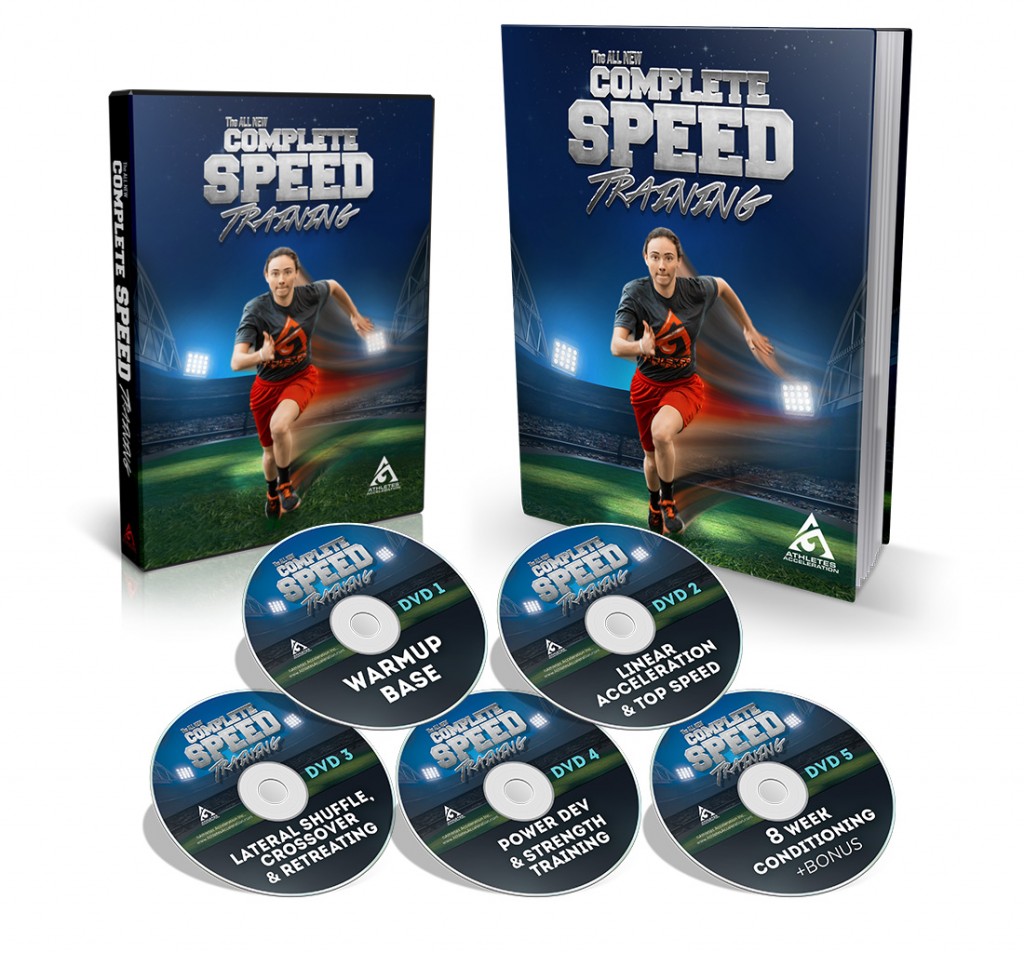Today I have a special guest post from speed development expert Lee Taft. This article covers an important topic, the distinction between quick feet and athletic quickness. As a reminder, you can save $100 off his new “Complete Speed Training” system until this Friday (2/13).

Quick Feet vs. Athletic Quickness
If we really take a close look at a coaching session for quickness it is quite possible we could see two to three different approaches. In one case we might see a coach using many fun and creative tools that focus on foot quickness. For example; the speed ladder, rings, dot drills, and many other pieces of equipment are often used for athletes to challenge how quickly they can move their feet. So the training revolves around improving the ability to perform various drills as quickly as possible using sharp foot quickness drills.
Foot Quickness Drills– performing drills that challenge the athlete’s ability to move the feet as quick as possible through a drill. An example of tools commonly used are ladders, dot drills, and agility rings. The body posture of the athlete is based on the need to move the feet quickly in the drill.
Athletic Quickness Training– athletes are taught things such as plant foot angles, shoulder control, mass and momentum control, and load to explode principles so reaccelerating as quickly as possible is the goal. The skills learned will translate to court and field quickness
Another form of coaching athletes for quickness might focus around teaching the athletes to change their direction of travel as quickly as possible so they can display multi-directional quickness. In this form of coaching the instructor helps the athlete understand how “reacceleration” is critical if great court and field quickness is the goal. The instructor might talk about plant angles, controlling shoulder sway, and loading the joints properly so a direction change is explosive.
There is a third approach a coach can use to increase a combination of foot quickness and athletic quickness. In this approach the athlete might use a tool like the speed ladder and tie together quickness of foot with body positioning and plant angles to gain the best of both worlds. To do this coach wants to hold the reigns back on the athlete when going through the ladder, so simply going 100 miles an hour isn’t the focus. The focus needs to be on sound cutting or change of direction mechanics at a pace that would be consistent in sport- so don’t always go fast, sometimes use change of pace to set up a move. In this style of coaching quick feet with athletic quickness the athlete can get tons of reps by using a tool like the ladder but still have the emphasis be on the pureness of athletic quickness.
With the advent of really cool speed and agility equipment often comes the neglect of pedagogy. When coaches rely on the “tool” doing the work for them and no longer focus on biomechanics of movement, force production/reduction, and mass and momentum factors skill coaching gets lost.
I am one that believes there is a place for all kinds of quickness training. I also believe you have to know why and when to use the exercises you choose. Performing pure quickness drills that make the feet “buzz” back and forth are great when you are trying to ramp up the nervous system and build energy into your athletes. I also think random drills that only demonstrate quick footwork can be a waste of time when the athlete might be better served working on athletic quickness.
Always remember that Drills are a conduit to Skills. The skill must be chosen first based on what it is that must be improved during that practice. Once the skill work is established the drills can be chosen. An example of this would be lateral change of direction quickness for a tennis athlete. The skill needing improvement is recovering from a wide groundstroke and getting back to the center of the court. The drill that is chosen must represent the abilities needed. These abilities are a wide plant foot to stop momentum and redirect it, a directional step which allows the crossover to be used to accelerate quickly, and shuffle mechanics so she can be prepared to change direction based on the opponent’s groundstroke direction.
As we can see coaching quickness can take on many faces. It is up to the coach to understand the value of the method. Quickness is a great thing to watch when it is explosive! So know what the athlete needs, know how to teach it, and get ready to take your athlete to the next level…Quickly!
To your success,
Kevin Neeld
HockeyTransformation.com
OptimizingMovement.com
UltimateHockeyTraining.com
Please enter your first name and email below to sign up for my FREE Athletic Development and Hockey Training Newsletter!